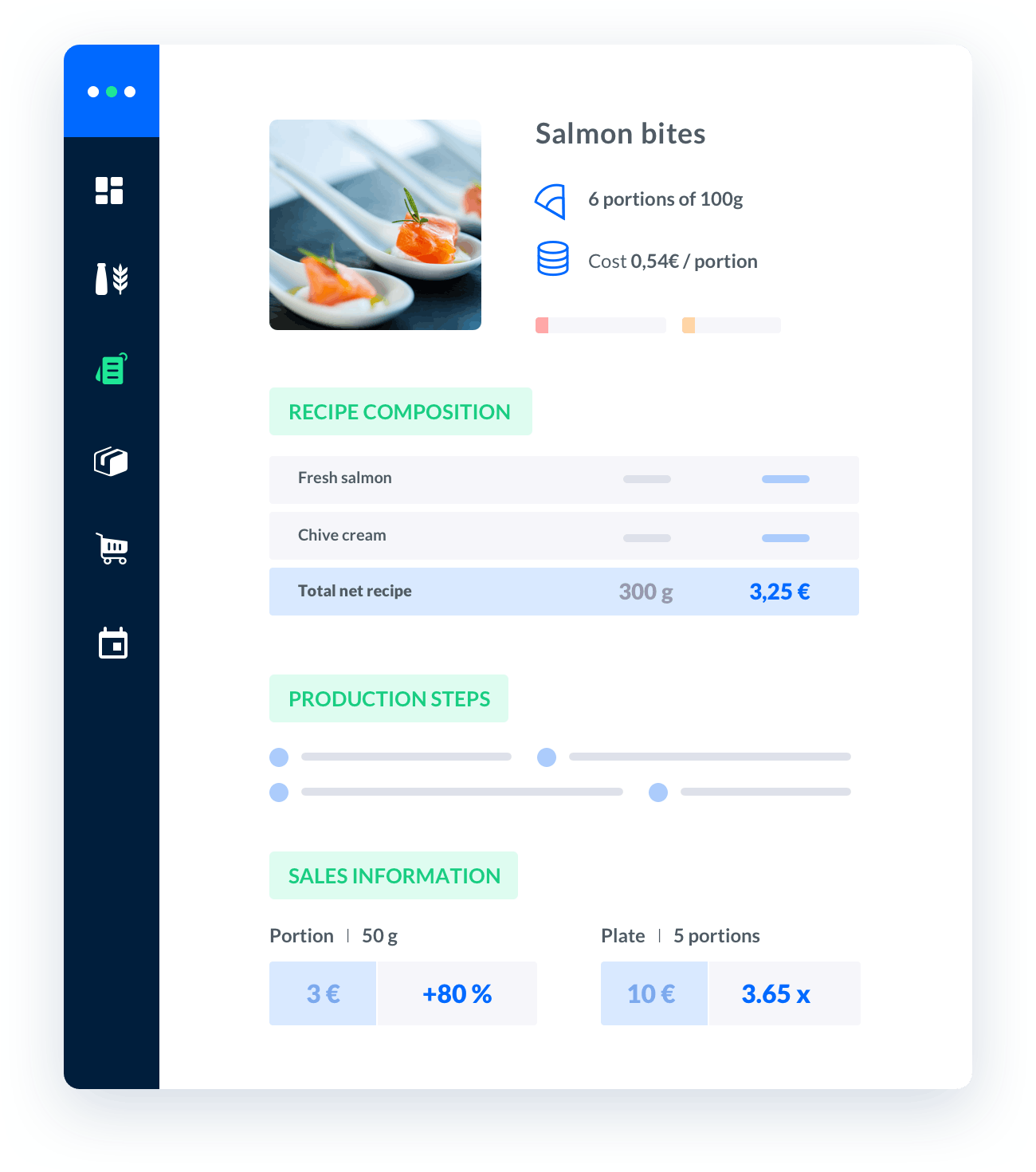how to calculate labor cost per meal
Calculating labor cost per meal is a crucial aspect of managing a successful catering business.By accurately estimating labor costs, you can ensure profitability, maintain cost control, and make informed decisions regarding pricing and staffing.

Melba: the food cost app to optimize the profitability of your restaurant
Discover how to optimize the profitability of your restaurant with melba

The ultimate guide to food cost restaurant
Learn more about the food cost basis and how to reduce your food cost percentage
Calculating labor cost per meal is a crucial aspect of managing a successful catering business. By accurately estimating labor costs, you can ensure profitability, maintain cost control, and make informed decisions regarding pricing and staffing. In this comprehensive guide, we will walk you through the step-by-step process of calculating labor cost per meal in the catering industry.
Understanding Labor Cost in the Catering Industry
In the catering industry, labor cost refers to the total expenses incurred in paying employees for their time and services. This includes wages, salaries, benefits, taxes, and any other costs associated with the workforce.
Factors Influencing Labor Cost
Several factors can impact labor cost in the catering industry:
- Number of employees: The more staff members you have, the higher your labor cost will be.
- Hourly rates: Different positions may have varying hourly rates, depending on the skill level required.
- Employee benefits: Health insurance, retirement plans, and other benefits provided to employees contribute to labor cost.
- Overtime hours: Paying employees for working beyond regular hours can significantly increase labor expenses.
- Employee turnover: Frequent turnover requires additional costs for recruitment, training, and onboarding.
Step-by-Step Guide to Calculating Labor Cost per Meal
Step 1: Determine the Total Labor Hours
The first step in calculating labor cost per meal is to determine the total number of labor hours required to prepare and serve the meals. This includes all tasks performed by your staff, such as food preparation, cooking, plating, serving, and cleanup.
Step 2: Calculate Labor Cost per Hour
To calculate the labor cost per hour, you need to consider the total payroll expenses for a specific period. This includes wages, salaries, benefits, and any additional costs associated with your employees. Divide the total labor cost by the number of labor hours worked during that period to obtain the labor cost per hour.
Step 3: Determine the Labor Cost per Meal
Once you have the labor cost per hour, you can determine the labor cost per meal. Multiply the labor cost per hour by the total labor hours required to prepare a single meal. This will give you the labor cost associated with producing one meal.
Importance of Accurate Labor Cost Calculation
Accurately calculating labor cost per meal is essential for several reasons:
- Pricing decisions: Knowing the labor cost per meal helps you set appropriate prices that cover both food and labor expenses, ensuring profitability.
- Cost control: By understanding your labor costs, you can identify areas of inefficiency and take necessary measures to control expenses.
- Staffing decisions: Proper labor cost calculation helps you determine the optimal number of staff members required to meet demand without incurring unnecessary costs.
- Budgeting and forecasting: Accurate labor cost data enables you to create realistic budgets and make informed forecasts for future business operations.
Best Practices for Managing Labor Costs
Implementing effective strategies to manage labor costs can contribute to the overall success of your catering business. Here are some best practices:
1. Optimize Staff Scheduling
Create efficient schedules that align with your business's peak hours and minimize idle time. Consider using employee scheduling software to streamline the process and avoid overstaffing or understaffing.
2. Cross-Train Employees
Encourage cross-training among your employees to enhance flexibility and productivity. This allows your staff to handle multiple tasks, reducing the need for additional labor during busy periods.
3. Monitor and Analyze Labor Data
Regularly review labor data such as labor cost per meal, labor hours, and employee productivity. Analyze trends and identify areas where improvements can be made to optimize labor costs.
4. Invest in Technology
Explore technology solutions such as POS systems, inventory management software, and time-tracking tools. These can help automate processes, improve efficiency, and provide accurate labor cost data.
5. Train and Motivate Employees
Invest in training programs to enhance employee skills and productivity. Motivated and well-trained staff can perform tasks more efficiently, reducing labor costs in the long run.
By following these best practices and accurately calculating labor cost per meal, you can effectively manage your catering business's labor expenses, improve profitability, and ensure long-term success.






